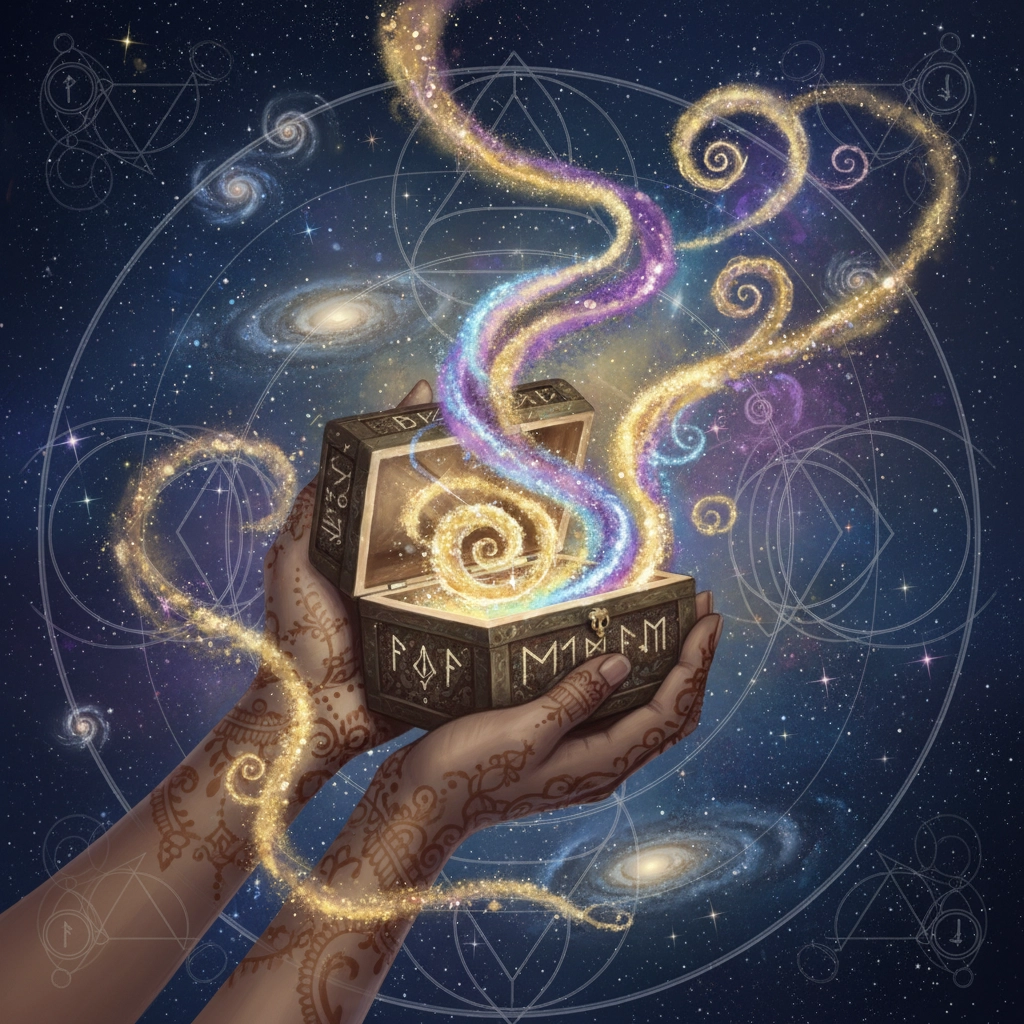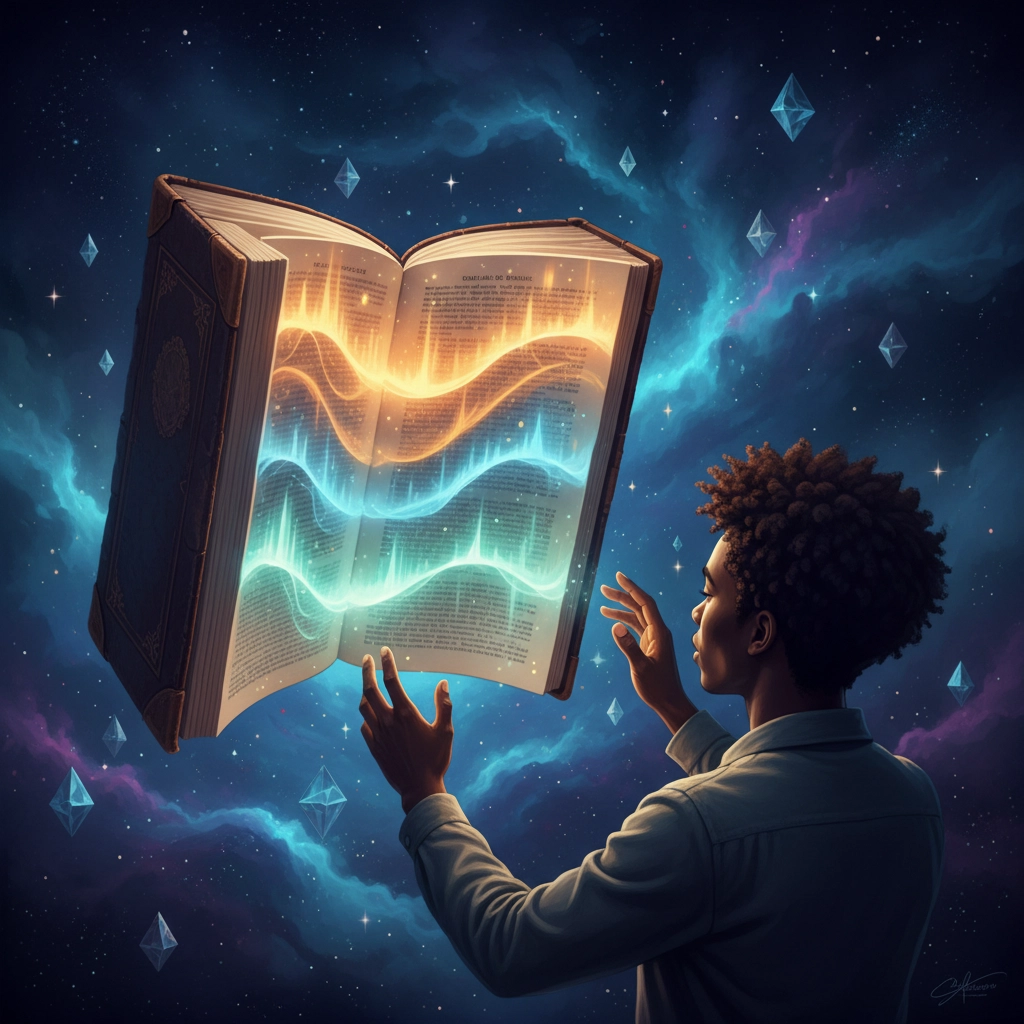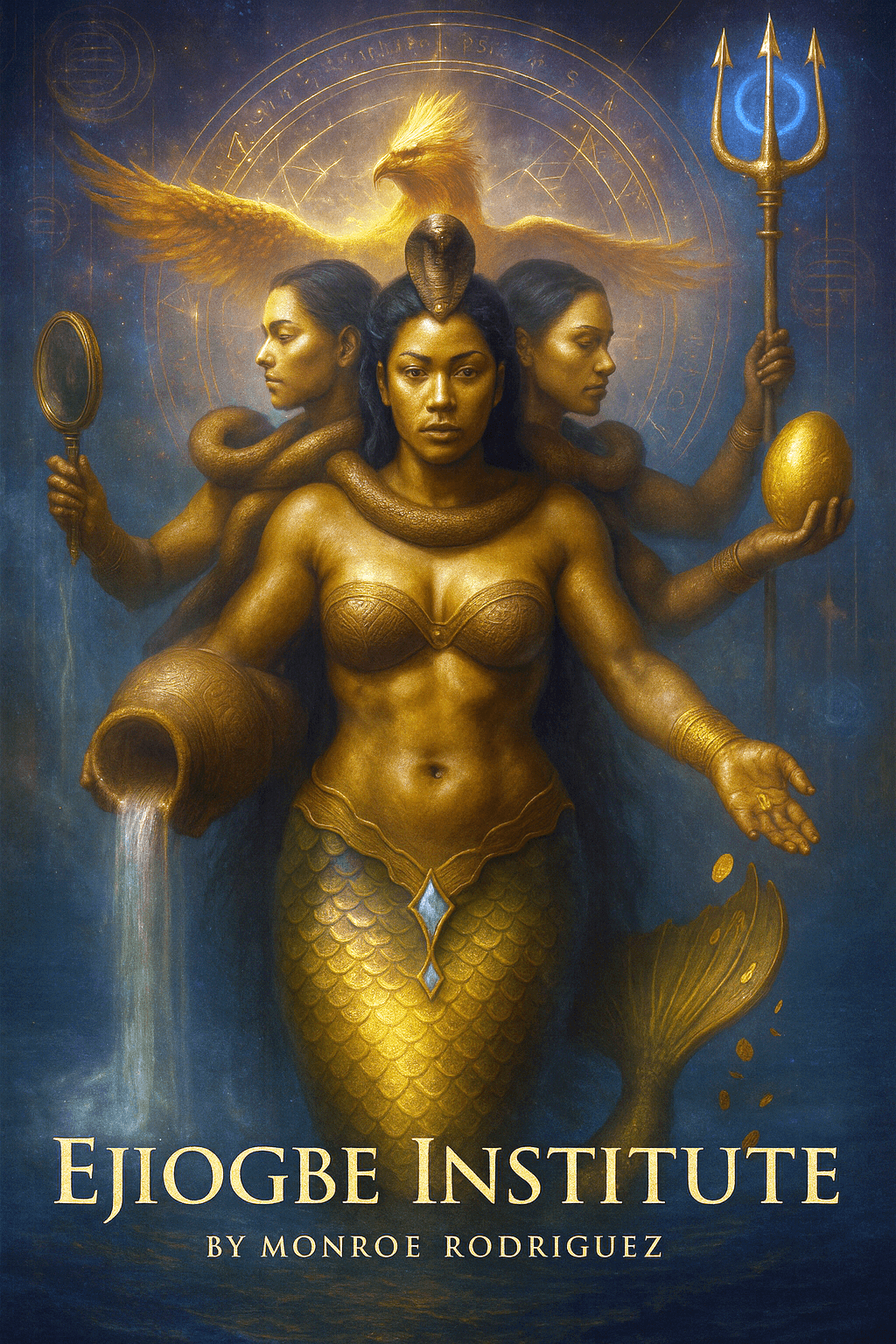
Have you ever held an old piece of jewelry and felt an inexplicable wave of emotion wash over you? Or touched a photograph and sensed something beyond what your eyes could see? You might have been experiencing the subtle art of psychometry: the ancient practice of reading the energetic imprints held within objects.
In our modern world, where everything moves at digital speed, we often forget that the physical realm carries memory. Every ring, every book, every treasured keepsake holds within it the echoes of those who came before. Psychometry is the sacred art of listening to these whispers.
The Soul Measure: Understanding Psychometry
The word "psychometry" emerges from Greek roots: psukhē meaning "spirit or soul" and metron meaning "measure." Literally translated, it means "soul measuring," which beautifully captures the essence of this practice. When you engage in psychometry, you're not simply touching an object; you're measuring the soul-energy that has been absorbed into its very molecules.
This practice, also known as object reading or psychoscopy, operates on a profound spiritual principle: everything in the physical world carries an energetic signature. Your grandmother's wedding ring doesn't just hold gold and diamonds: it holds decades of love, worry, joy, and daily life. That antique desk in your office isn't merely wood and metal: it carries the dreams and struggles of everyone who worked at it before you.

How Objects Become Energy Repositories
To understand psychometry spiritually, we must first embrace the concept that energy never truly disappears: it transforms. When someone interacts with an object repeatedly, especially with emotional investment, their energy becomes woven into the item's energetic fabric. Think of it as layers of invisible ink, each interaction adding another story to the object's spiritual autobiography.
The more meaningful an object is to someone, the deeper the energetic imprint becomes. A well-loved teddy bear carries more psychic information than a mass-produced item that sat untouched on a shelf. A family heirloom passed down through generations holds the collective emotional history of your lineage.
This principle aligns with ancient wisdom traditions that recognize the animistic quality of all matter. Everything: from the smallest pebble to the most elaborate piece of art: possesses its own energetic consciousness and maintains a record of its experiences.
The Practice: How Psychometry Actually Works
When a psychometer approaches an object, they're engaging in a sacred dialogue between their consciousness and the item's stored energy. The process typically begins with gentle, mindful touch: fingertips tracing surfaces, palms resting on materials, hands cradling the object with reverence.
The key lies in receptivity. Unlike other psychic practices that might involve projecting energy outward, psychometry requires you to become an open channel. You're not imposing your will upon the object; you're inviting it to share its stories with you.
Many practitioners describe entering a slightly altered state of consciousness: not quite a trance, but a softened awareness that allows subtle impressions to surface. In this receptive state, information might come through various channels:
- Visual impressions: Seeing scenes, faces, or symbols in your mind's eye
- Emotional waves: Feeling joy, sadness, anger, or love that isn't your own
- Physical sensations: Experiencing temperature changes, tingling, or pressure
- Auditory messages: Hearing voices, music, or environmental sounds
- Intuitive knowing: Simply understanding information without knowing how
Distinguishing Psychometry from Other Psychic Arts
What makes psychometry unique among psychic practices is its requirement for physical contact. While a clairsentient medium might pick up on energies in a room without touching anything, psychometry specifically uses objects as gateways to information. The item becomes a bridge between dimensions, a tangible link to intangible wisdom.
This differs significantly from channeling or mediumship, where practitioners connect directly with spiritual entities. In psychometry, you're reading the energetic residue left by living people's interactions with physical matter. You're not necessarily communicating with spirits: you're interpreting the energy signatures they've left behind.

The Historical Tapestry
The formal study of psychometry began in 1842 when American physiologist Joseph Rodes Buchanan coined the term. Buchanan theorized that all objects possess souls and retain memories: a revolutionary concept that challenged the materialistic worldview of his era. He believed this understanding would transform how we perceive the relationship between consciousness and matter.
Following Buchanan's work, geologist William F. Denton and German researcher Gustav Pagenstecher expanded the field's exploration. By the early 20th century, European universities were conducting formal experiments using psychometry to locate missing persons and even solve crimes. While mainstream science remained skeptical, these early researchers documented compelling cases that suggested objects could indeed hold retrievable information.
Spiritual Principles at Work
From a spiritual perspective, psychometry operates on several fundamental principles that transcend cultural boundaries:
Energy Imprinting: Everything you interact with receives an energetic impression from you. Your emotions, thoughts, and spiritual state leave subtle marks on the objects you handle regularly.
Resonant Connection: Like attracts like in the energetic realm. Objects that have absorbed similar emotional frequencies can create connections across time and space.
Consciousness Non-Locality: Your awareness isn't confined to your physical brain. Through psychometry, you access a broader field of consciousness that includes the information stored in material objects.
Sacred Reciprocity: The practice works both ways. As you read an object's energy, you also leave your own imprint upon it. This creates an ongoing dialogue between past and present.
Practical Applications for Modern Life
Psychometry offers practical benefits beyond curiosity or entertainment. Many people find it helpful for:
Ancestral Healing: Reading family heirlooms can provide insights into generational patterns, helping you understand inherited traumas or gifts.
Home Energy Assessment: Understanding the energetic history of your living space allows you to clear negative imprints and enhance positive ones.
Decision Making: When choosing antiques or second-hand items, psychometry can help you sense whether their energy aligns with your intentions.
Spiritual Development: Regular practice strengthens your overall psychic sensitivity and deepens your connection to the subtle realms.
Therapeutic Support: Some practitioners use psychometry in conjunction with counseling to help clients process grief or understand family dynamics.

Developing Your Own Practice
If you feel called to explore psychometry, begin gently and with respect. Start with objects that belong to loved ones who have given permission for you to work with their possessions. Hold the item in your non-dominant hand (traditionally considered more receptive) and simply breathe.
Notice what arises without judgment. The first impressions are often the most accurate, even if they seem random or disconnected. Trust your inner knowing more than your analytical mind.
Remember that psychometry, like all spiritual practices, requires patience and compassion: both for yourself and for the energies you encounter. Some objects carry difficult stories. Approach each reading with the understanding that you're witnessing sacred history.
Integration and Wisdom
As you develop your psychometric abilities, consider how this practice can serve your broader spiritual journey. The skill of reading objects can deepen your appreciation for the interconnectedness of all things. Every item you touch carries stories, dreams, and experiences that connect you to the vast web of human experience.
This ancient art reminds us that nothing exists in isolation. The coffee cup you drink from each morning, the jewelry you wear, the books you read: all of these objects participate in your spiritual evolution while simultaneously recording your own energetic signature for future generations.
In learning to listen to the whispers held within matter, you develop a more intimate relationship with the physical world and a deeper understanding of how energy moves through time and space. This is the true gift of psychometry: not just reading the past, but understanding how the past, present, and future are eternally woven together in the sacred tapestry of existence.
Through this practice, you become both witness and participant in the ongoing story of consciousness expressing itself through matter: a story that includes your own chapter and extends far beyond what your eyes alone can see.
